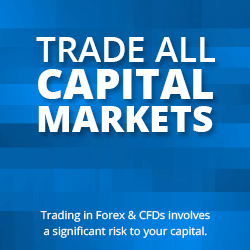GDP Growth

Real GDP growth is the most important factor if you want to look at how prosperous and dynamic a certain country’s economy is. High GDP growth rates, which are also more sustainable than other countries, tend to lead to the currency’s value increases. The reason behind this is that foreign investors are becoming more interested in investing in a successful country/economy.
Everyone wants to invest in fast growing countries
Companies in countries with higher GDP growth than average, also tend to increase their turnover, profits and in many cases their profit margin faster/quicker.
The result is that many investors want to invest in countries with high economic growth. Investments and purchases of foreign currency can be made through direct investment or through acquisition of shares in companies active in the country.
Strong GDP growth is usually associated with a tight monetary policy from the domestic central bank, while interest rates tend to be relatively high rate in order to keep inflation under control. A high interest rate are also attracting even more investors into the country (because the interest rate is usually higher than other countries with more GDP growth). Also, there are many forex carry traders, profiting from high interest rates.
A positive capital base gives stronger currency
The above factors will usually lead to a positive capital account, ie. more capital coming into the country than flowing out. This results in an increased demand for its currency and thus a higher exchange rate relative other countries.
Economic cycles and trends
By looking at GDP growth relative to other countries you get a picture of the long-term trend of a currency’s demand. However, it is important to note that it is the trend/direction that is most important to focus on. Just as the trend changes, exchange rates may change sharply. With current trend we here mean an introduction to an economic boom or recession.
Ongoing introduction or disruption of economic cycles, leading to volatile exchange rates – which are often appreciated by many online forex traders. That the exchange rate becomes volatile at such times is normal, because currency traders begin discounting a certain sequence of events in exchange rates, already at a very early stage.
Then it really becomes a trend shift so you must figure out its strengths and calculate how long the new trend will continue.
How can turning points in economic cycles be identified?
To spot a trend change, you are advices to look at key statistics such as corporate capacity, registration of new cars, new orders in manufacturing, construction of housing, purchasing managers in the future, industrial investment, etc.
It is important to point out the relationship between current account and capital base, which together create a country’s overall balance of payments. This controls the total demand for a currency and therefore the exchange rate. Thus, it is important to look at both current and capital accounts in order to get an idea of a currency’s valuation.
Even if the capital account is negative, it does not always lead to weakening of the domestic currency. If the current account balance is positive, and perhaps greater than capital account balance, it often leads to an exchange rate gain.
Current account and capital account has different weight depending on how a country’s economy looks like. For a small economy that is export-dependent, such as Spain, it is perhaps important to look at trade with foreign countries. For large and dynamic economies that are not dependent on exports, but most of domestic consumption, such as the United States, as GDP growth is an extremely important indicator to watch for.
<< Previous (Inflation) Next >> Valuation of currencies
Article written by Athanasios Karagiannis.
Anything we forgot about GBP growth? Please send us an e-mail.





